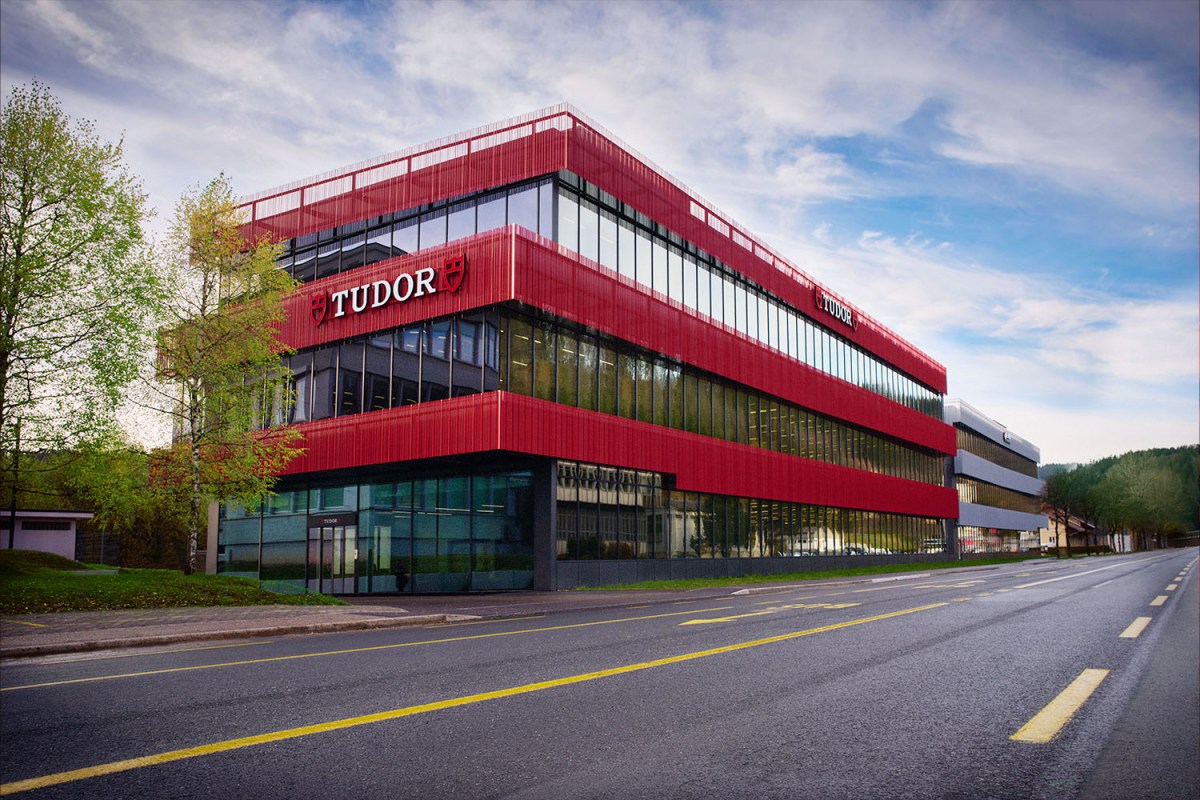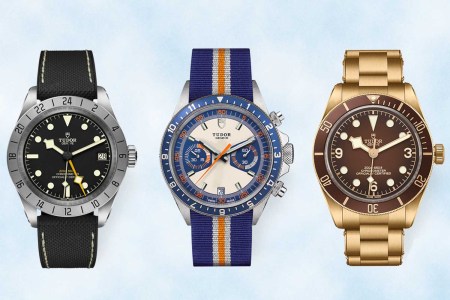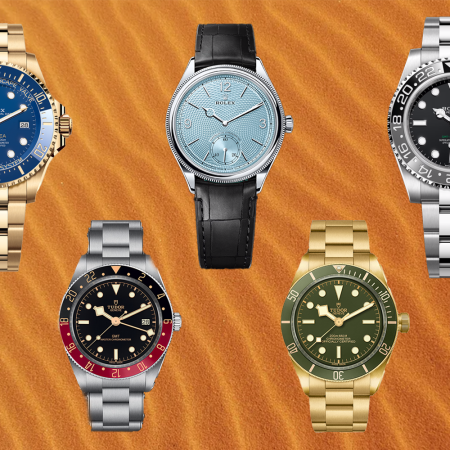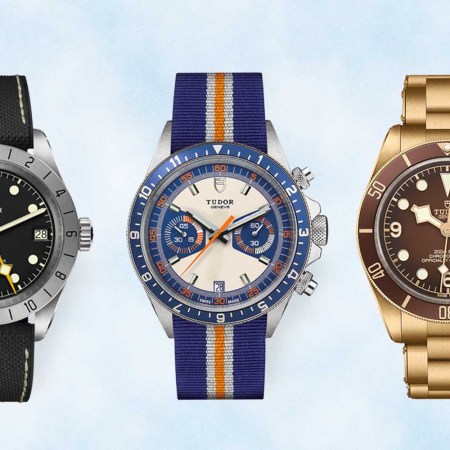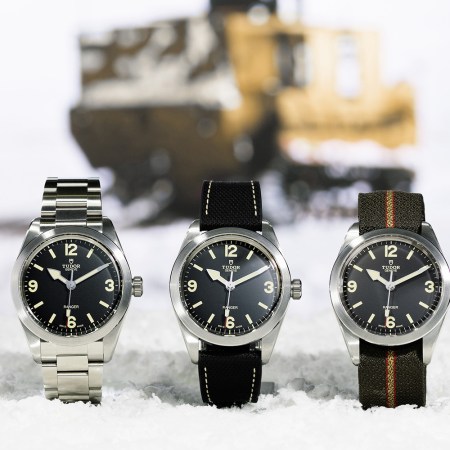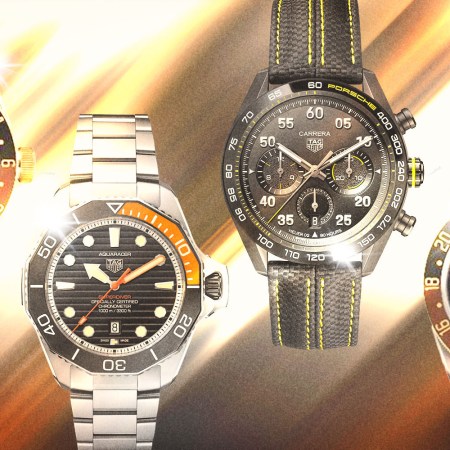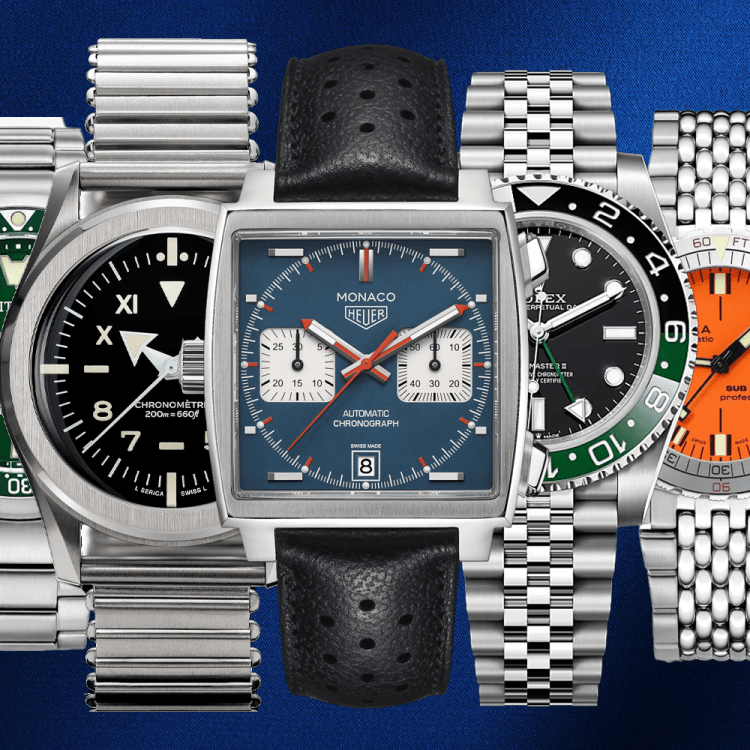In 1926, Hans Wilsdorf, the founder of Rolex, registered a name for a new company — one that would produce more affordably priced versions of his beloved watches. The name he registered was “Tudor.”
Though a few Tudor-signed watches were produced during the 1930s, the brand’s story truly begins just after the Second World War in 1946, when Wilsdorf officially founded Montres Tudor SA. By reimagining Rolex designs and using Rolex parts — but powering them with off-the-shelf Swiss movements from the likes of Fleurier and later, ETA — Wilsdorf was able to market his wares to an entirely new audience. It was a stroke of genius that only an entrepreneur as industrious as Wilsdorf could have imagined.
Tudor: The History, the Watches and More
Originally positioned as an affordable alternative to Rolex, Tudor is now a force to be reckoned with in its own rightTudor itself has come quite a long way since then. For decades upon decades it operated under Wilsdorf’s remit, and it still positions itself today much more affordably than its sister brand. However, gone are the days when the company relied solely upon sourced movements; indeed, for the past decade-plus, the maison has been developing its own line of impressive calibers, and has even founded its own movement manufacture.
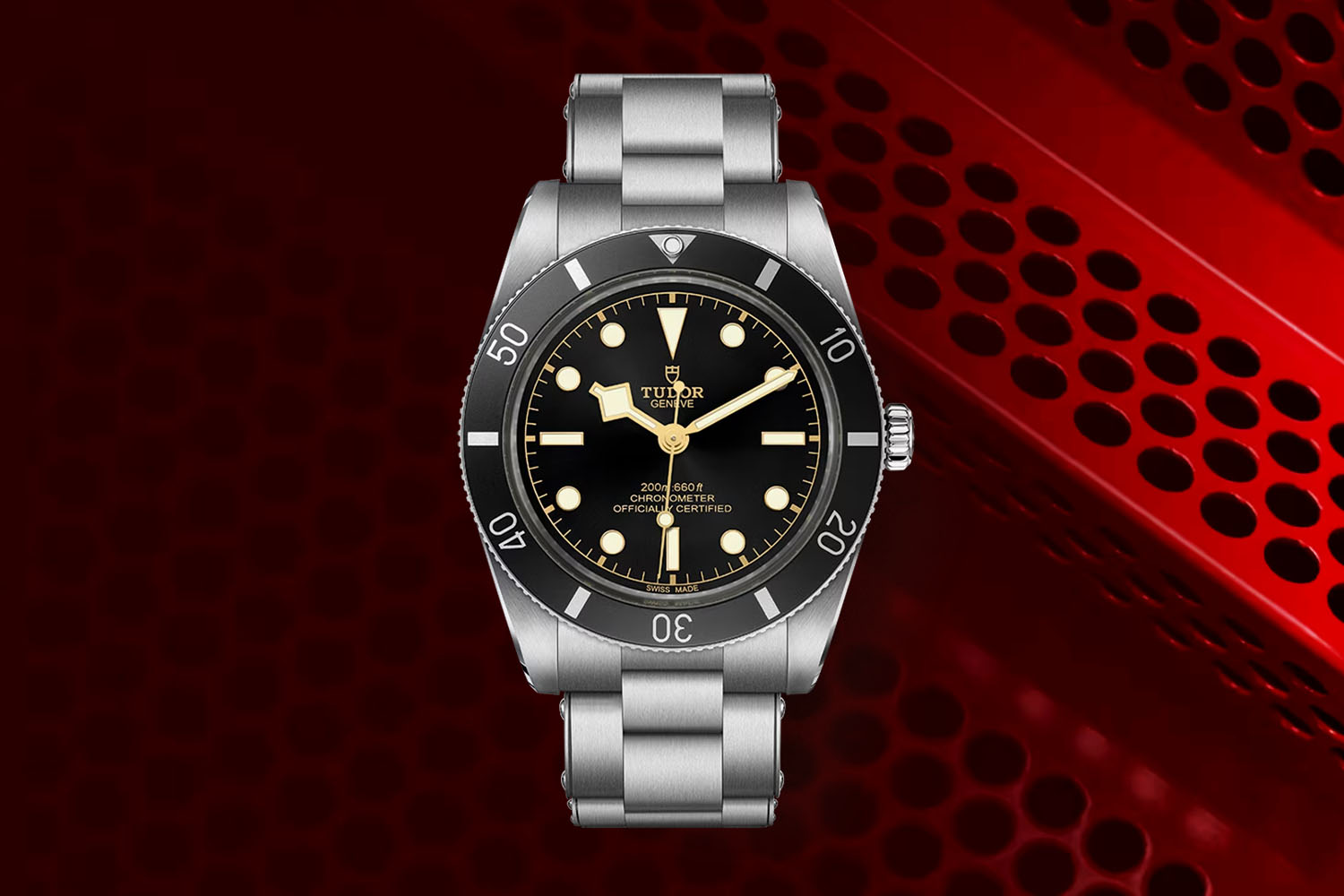
In 2010, Tudor began working on its first in-house caliber, the Calibre MT5621, which it launched in 2015 and used to power its North Flag field watch and its Pelagos dive watch. This movement was later fitted to other Tudor sports watch lines and proliferated throughout the brand’s catalog. In 2016, the company founded Kenissi — from the Greek for “movement” — its own movement manufacture, taking on its first client, Breitling, in 2017; launching an industrial alliance with Chanel in 2018; and later working with other watch industry clients such as Norquain, Fortis, TAG Heuer, Bell & Ross, Ultramarine, and others.
Suddenly, Tudor was no longer merely an “affordable alternative to Rolex” — though its wares remain eminently affordable considering their movements, construction, materials, and more. Suddenly, Tudor is very much its own animal, making contemporary (though vintage-inspired) timepieces, outfitted with manufacture movements, and releasing a stream of new models that fans can’t seem to get enough of.
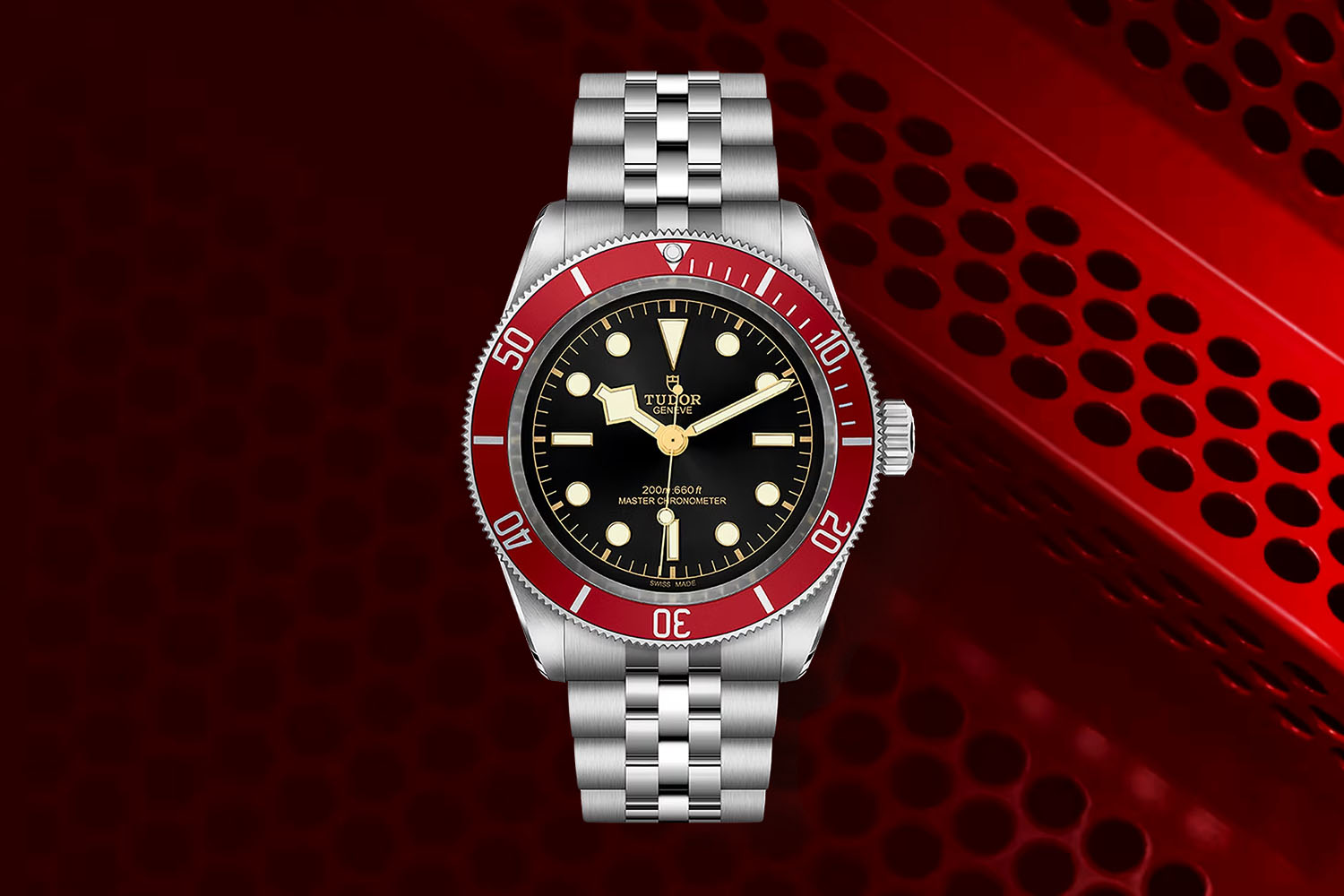
The New Manufacture
In 2023, Tudor inaugurated a new manufacture (the French term for a company’s production facility) in Le Locle, about two hours outside of Geneva. (Or, if you’re on a double-decker tour bus and it’s raining, about 67 hours outside of Geneva.) Situated in the midst of “watch country” — one passed large building with words like “Cartier” and “Patek Philippe” on them during one’s drive — it’s an impressive facility tucked into the midst of what otherwise seems like a sleepy little Swiss town…but is of course filled with watchmakers.
Actually, to be more precise, it’s two facilities connected by various passageways — one for Tudor itself, and one for Kenissi, the movement manufacture. We were among the first journalists to ever visit these facilities just ahead of Watches & Wonders 2023, and they certainly impressed. (It was also interesting to see a large manufacture when it’s brand new, as not all the available space is being utilized yet. Quite a different thing than visiting, say, Jaeger-LeCoultre, which has been making watches in Le Sentier since U.S. newspapers were rife with talk of secession.)
We began our journey in Kenissi’s facilities — let’s start there…
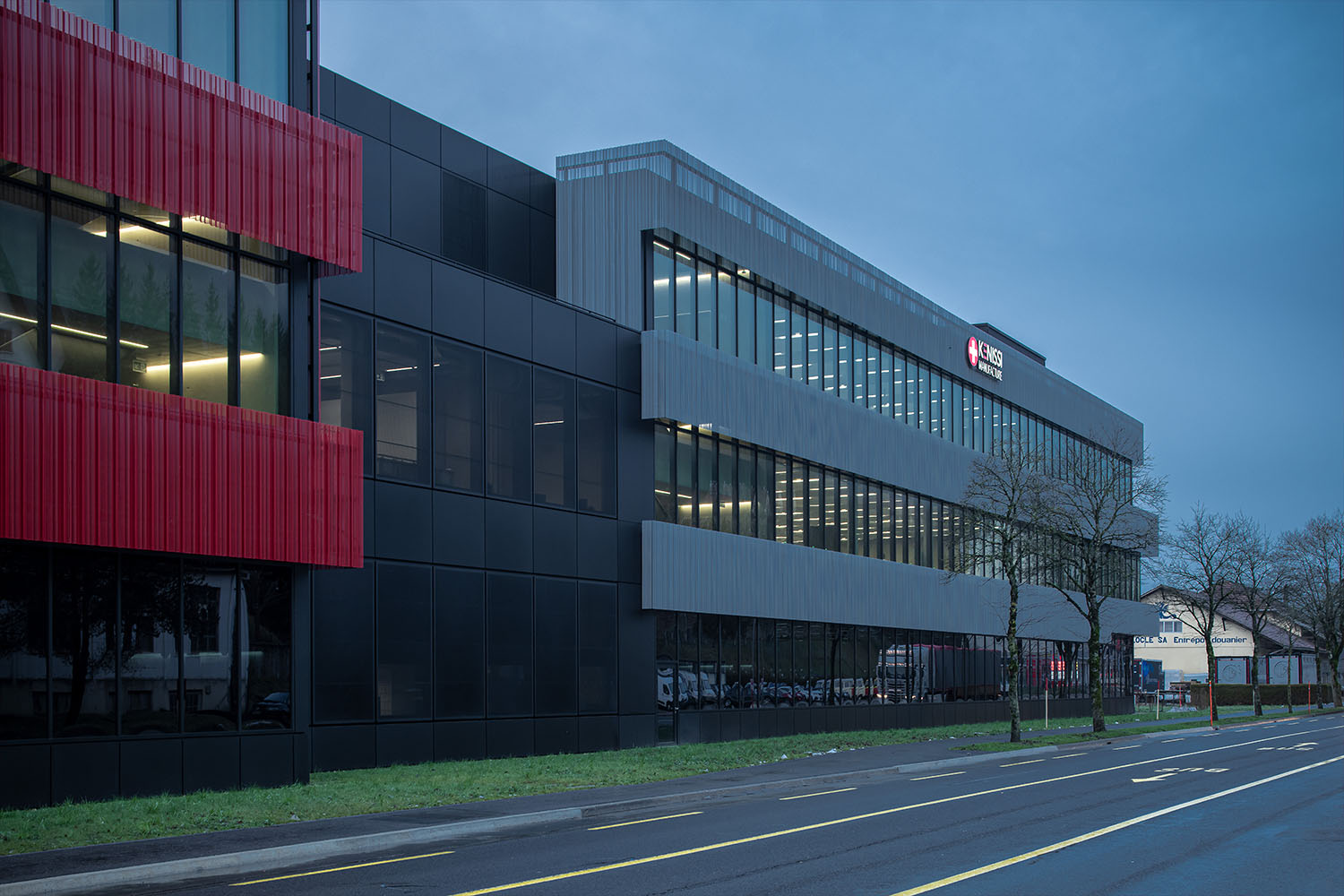
Kenissi: Where Movements Are Made
The Kenissi and Tudor buildings are functionally one large facility, though different color schemes — red and black for Tudor, grey and black for Kenissi — separate them. Tudor is very open about the way it goes about constructing watch movements: All “strategic” components — think balance wheels, bridges, etc — are produced by a network of companies owned by Tudor, while non-strategic components such as screws, jewels, etc are purchased from Swiss suppliers. Each movement is thus assembled at Kenissi, though not entirely manufactured there on-site.
This way, the manufacturing process for Tudor movements is almost entirely verticalized. (One could make the argument that it’s not completely vertical if one is purchasing things like screws or jewels — and that is each reader’s personal prerogative — but to our minds, a Tudor “manufacture” caliber is certainly “in-house.” Not many companies, including large, powerful ones, make their own jewels — mostly because it doesn’t make economic and business sense to do so.)
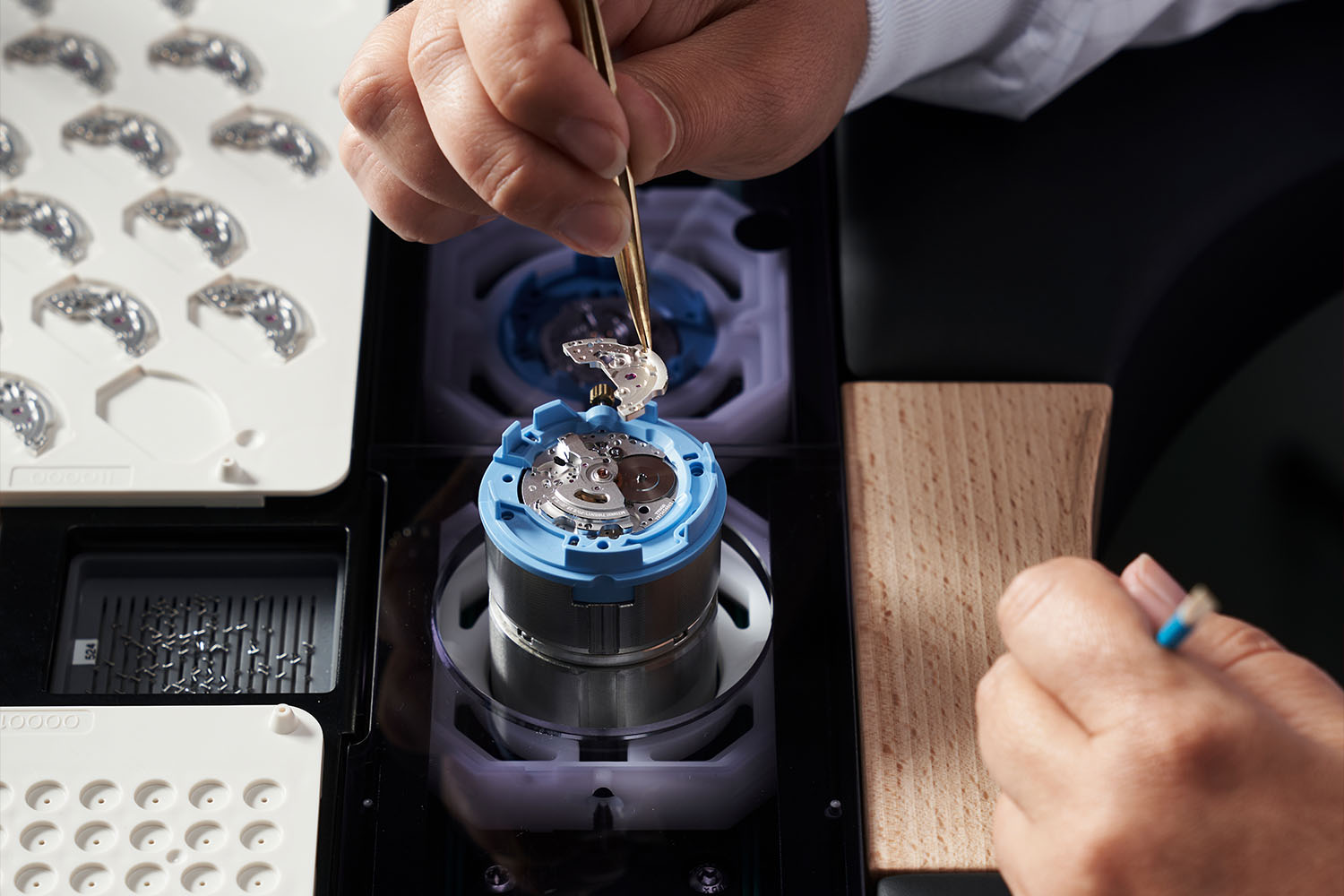
Regarding the companies within Tudor’s strategic parts supplier network: Some were founded by Tudor, some were purchased, and some have been part of the network for a long time. Kenissi itself essentially builds three types of movement — small, medium, and large — which are each highly customizable with different complications, and which are also provided to Tudor’s clients like Norquain, TAG Heuer, etc.
Tudor demands that its movements be reliable and robust; precise to within COSC standards or better (-4/+6 seconds per day); and feature power reserves of at least 70 hours for medium and large calibers, or 50 hours for small calibers. It achieves this through an impressive combination of savoir faire in its workforce and cutting-edge technology, as evidenced by our first stop on the Kenissi tour.
Assembly
Beyond the sparkling clean lobby was an equally sparkling assembly area in which the workers were dressed in white working blouses to protect the movements from dust. Assembly is handled by skilled watchmakers in a dead quiet, controlled environment. (We don’t believe one would be summarily executed for chit cat, but we also don’t have any evidence to the contrary.)
Things such as chronometric testing, lubrication, and clearance measurement are automated, but before this can happen, each base plate is inserted into an appropriately sized plastic insert with an RFID tag on the back — this guarantees its proper path throughout the assembly process. The insert is then placed on an assembly line that moves it beneath each workstation. The RFID tag contains both assembly data and measurements taken throughout the assembly process, which helps Kenissi improve performance.
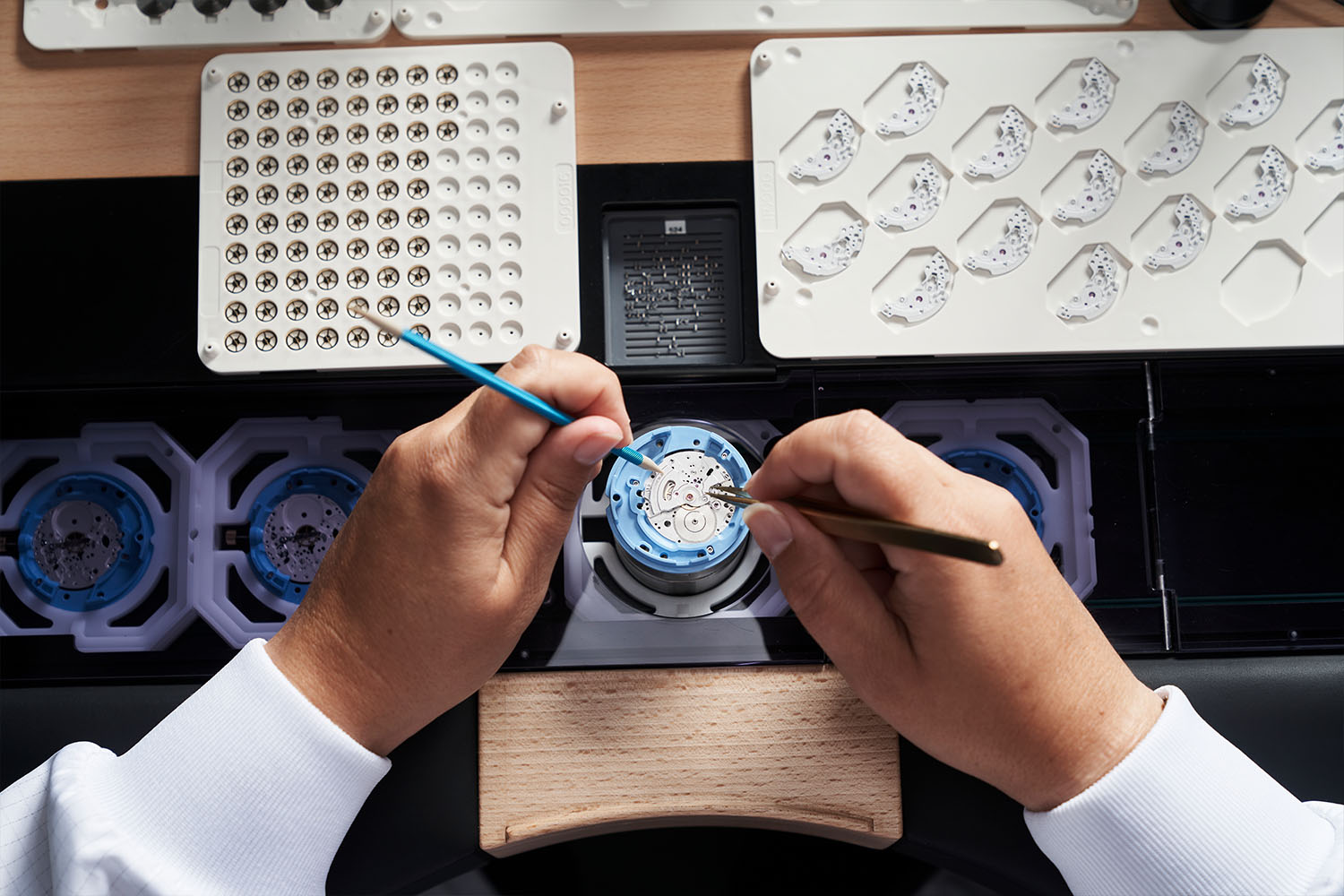
We’d never quite seen a manufacturing operation like this before: Each workstation is equipped with a light: green means a watchmaker is present and the station is in use; flashing green means the station is on pause; red or blue means there is a problem. The assembly line shuttles the movements beneath each workstation under a transparent housing, while a plethora of screens display testing data. (It’s all very sci-fi and cool.) Currently, there are about 110 workers in the Kenissi building — but staffing is continuing apace and isn’t remotely complete yet.
Once automated chronometry testing is completed, the watchmakers assemble auxiliary dials and hands so that the movements can be shipped to COSC (the Contrôle Officiel Suisse de Chronomètres) for accuracy testing during a three-week period. Once back at Kenissi, the movements go back onto the assembly line, where automatic winding systems are assembled.
Inside the Tudor Side of the Building
Tudor’s approach to watchmaking, as distinct from its approach to movement making, is one of horizontal integration: It purchases cases, bracelets, dials, hands, crystals, and more from external Swiss suppliers in the area and assembles them itself. (The components, of course, are designed by Tudor and produced to its specifications.)
Additionally, the brand is quick to point out its “zero-stock” philosophy — it doesn’t keep extra supply on hand, and each watch we viewed in its facilities was ultimately destined for a particular customer (even if the particular customer is a retailer). This philosophy, combined with the horizontal integration of its production facilities, is important to note, as it has an effect upon the price-quality ratio we’ve come to expect from the brand: In short, Tudor can afford to sell a dive watch with an in-house, COSC-certified movement for under $5,000 because of the way in which it manages its supplies.
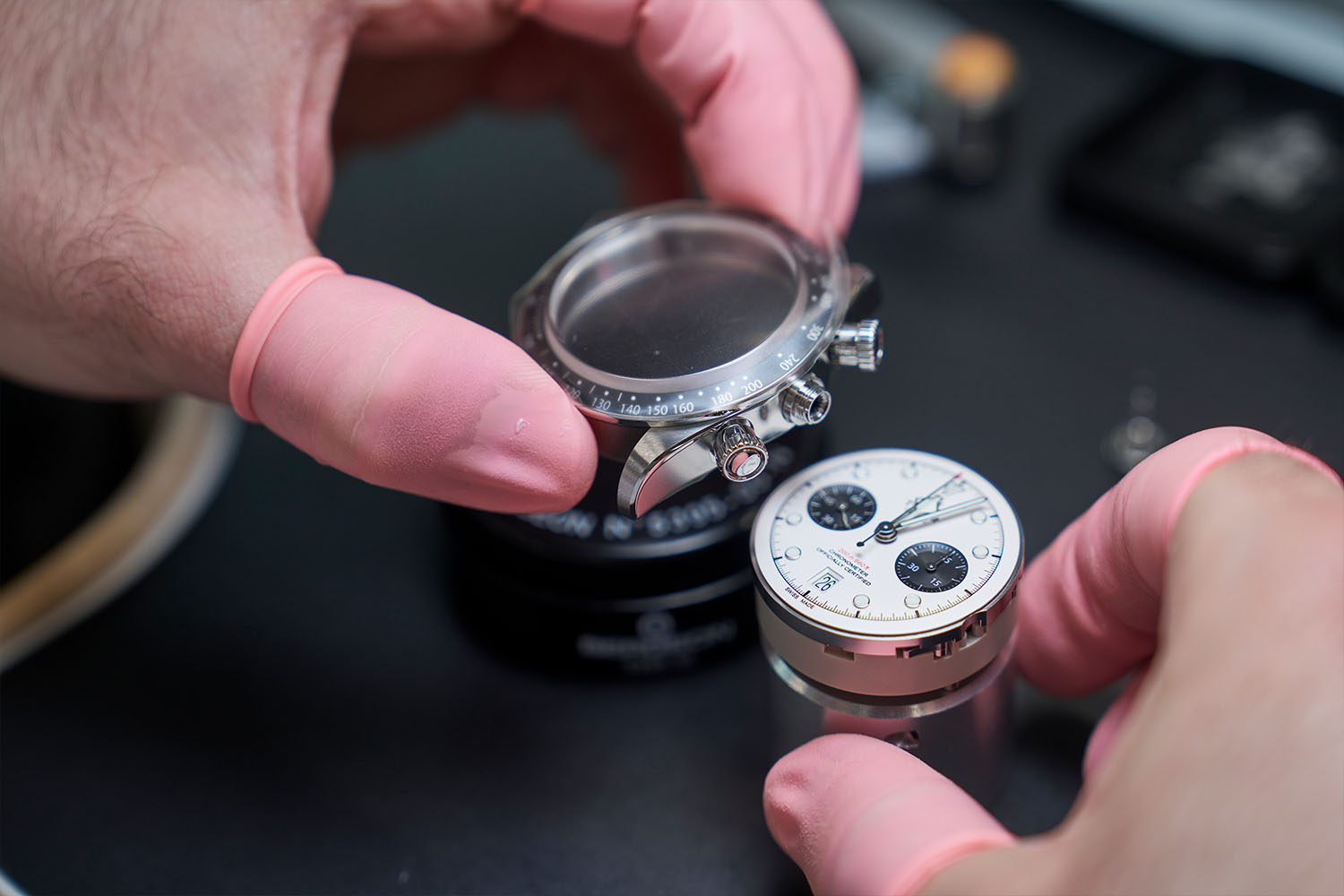
Tudor decided to move its manufacturing facilities to Le Locle from Geneva, its historical home since 1926, for several reasons: One reason was to operate closer to its supplier network; another was to have access to a plethora of trained watchmakers who live and work in the area; a third was that it’s worlds more affordable to build new facilities two hours outside the Swiss capital than within it. Which, of course, influences pricing.
It took 5 years — three to construct the new building, and two to move operations from Geneva — to complete this mammoth project, and by the end of April, 2023, Tudor will be manufacturing 100% of its watches (more than 700 distinct references) in the Le Locle facilities. Its quality controls are such that the company has one of the lowest rates of return for warranties timepieces in the watch industry. Additionally, it has a goal of eventually ensuring that each and every watch is Master Chronometer-certified (accurate to within 0 to +5 seconds per day).
Testing
Up on the second floor, movements are tested by a combination of humans and small R2-D2-looking robots with miniature conveyor belts for heads. (We shit you not. Currently these robots seem harmless, but a full-blown robot rebellion could very well result in movement base plates being hurled at visiting journalists at high speed from clear across a clean room. Hopefully this doesn’t come to pass. Thankfully, Swiss robots are famously neutral.)
Each movement is held to stringent standards via duel protocols — Tudor’s own performance control, and Master Chronometer specs (where applicable). Thus accuracy of -2/+4 seconds per day (or 0-5 seconds per day for METAS-certified watches); water resistance; power reserve; and magnetic resistance to 50,000 gauss are all tested.
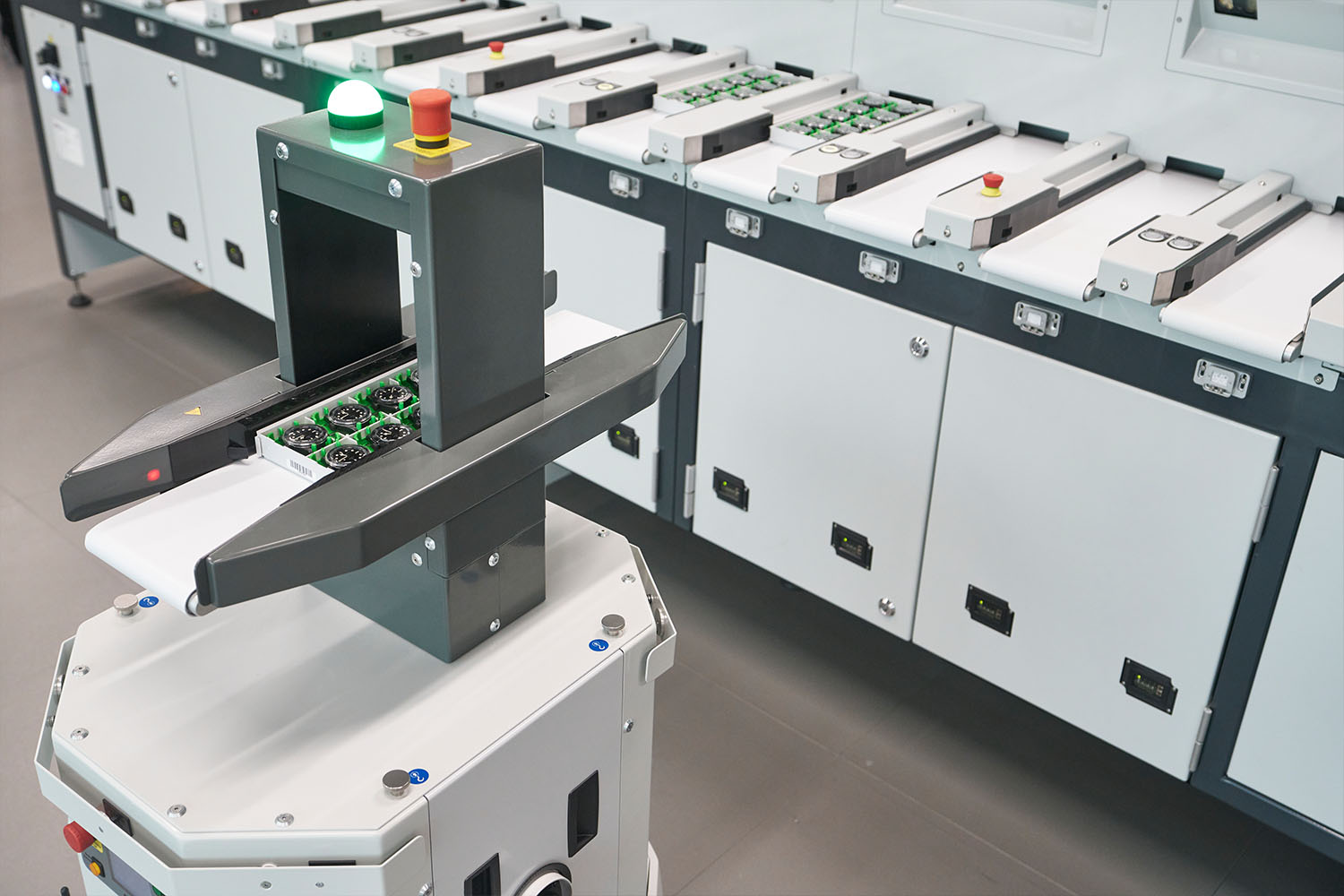
The testing equipment used — including a 50,000-gauss magnet enclosed in a large glass and metal housing — is specially developed for Tudor. Each movement gets a 33-second ride in the magnetic enclosure to make sure it’ll still perform to quoted specs following a Goldeneye-style EMP. (Fun!) The Master Chronometer (METAS) testing process is 10 days long, and all testing gear — 46 metric tons of it — is GPS-linked for coordinated timing measurement.
Since January of 2023, this testing equipment has been running 24/7, half-autonomously (via the cute robots), and half with the participation and supervision of humans. In a few months, robots will almost entirely run the show, with the humans only there to service equipment and stave off Judgement Day.
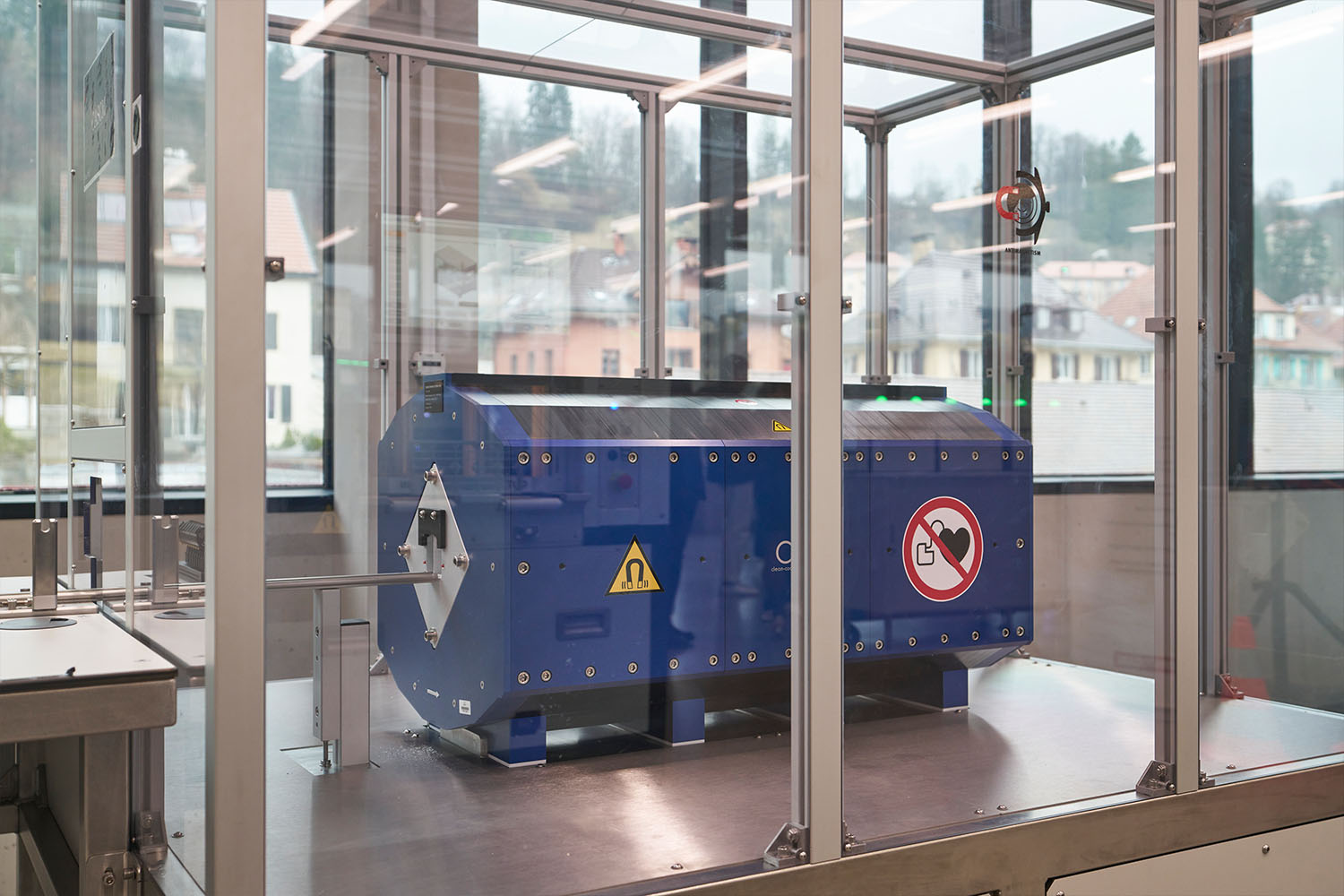
Bracelet-Fitting and Engraving
In this area, a sample checking team tests a smattering of different components — bracelets, cases, dials, etc — to within Tudor’s tolerances, after which they’re sent back to the automated stock system and thence, to watchmakers. The bracelet fitting team is an important part of Tudor’s assembly line, as it performs the final operation before a watch is shipped to a client.
Each member of this group is personally trained by the team lead to fit any type of Tudor bracelet or strap to any appropriate Tudor reference.
This area is also home to a special laser engraving station: Whereas Rolex largely stopped engraving watch cases and dials for its retail partners and others, Tudor does quite a bit of this and can handle logos, initials, messages and more. (This system is normally reserved for batches of watches ordered by retailers, rather than single pieces for an individual client.
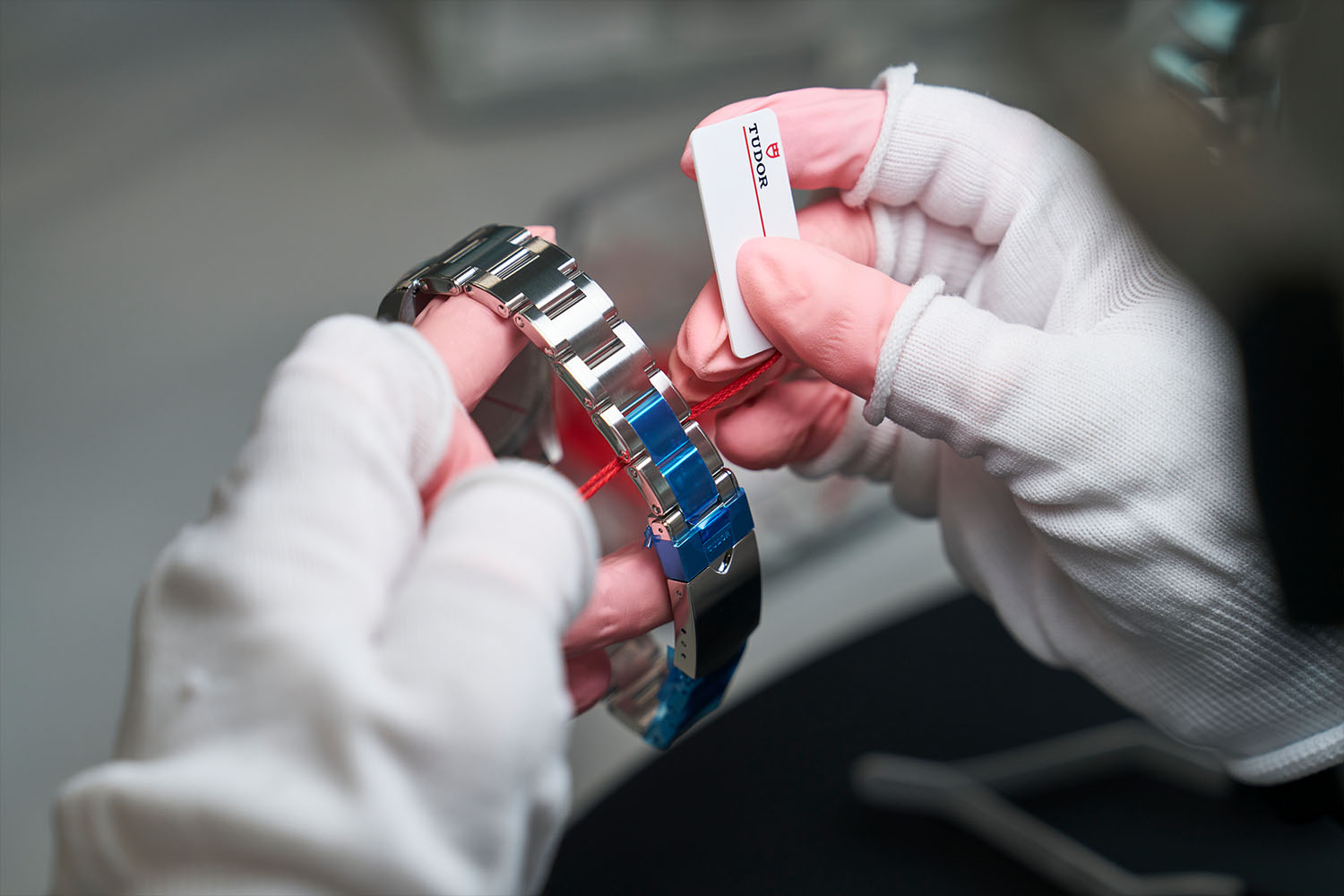
Automated Stock System
Within a central location in the Tudor manufacture is a vault-type room that forms the center of the brand’s automated stock system. (We weren’t allowed to photograph or record here.) Essentially, Tudor has built an incredibly intricate, automated system that makes each of its myriad watch components accessible to its watchmakers anywhere, at any point in time, within the building.
A series of trays, conveyor belts, robotic arms, and more allow for the flow and tracking of components around the manufacture, while each workshop has its own delivery station. It’s a system that, Tudor tells us, was the most labor-intensive to design and build of any system within the building. Much of the work is taken care of by robotic arms and automation, though for our visit — just a few weeks after after the electricity was supposedly switched on for the first time in this part of the operation — said arms were in “demo” mode, and seemed to be doing a choreographed dance to “Stayin’ Alive.”
The Assembly Floor
No less than 560 square meters are dedicated to the assembly of Tudor’s completed watches. A system housed in the building’s basement (more on this in a moment) allows for a semi-clean room environment, recycling the air five times per hour and preventing the ingress of dust. Normally, access to this area is restricted and necessitates the use of airlocks.
Because Tudor doesn’t keep excess stock of watches on hand, its watchmakers must be flexible, agile, and able to work on multiple references within the catalog. The workforce is here divided into “cells,” each of which contains a number of benches. Each bench is laid out the same way within the respective cell, making for a homogeneous and ergonomic environment — one that’s perfect for repetitive, precise movements.
Self-checks plus a final quality control check are used to ensure each watch’s quality. If an issue is identified, the component in question is sent back to the last person who worked on it in order to fix the issue. Tracking via RFID and other systems ensures accuracy and efficiency in this system.
The Basement
Because the manufacture is built in naturally wet terrain in the mountains, it was necessary to stabilize the building using 330 30-meter pillars sunk into the bedrock. A waterproof membrane was then constructed to shield this part of the structure, whereupon 850 cubic meters of concrete and 960 tons of metal were used for the structure itself. After six months of labor, the outer structure of the building was completed.
A complex humidity and temperature regulation system is needed to maintain an ideal working and testing environment. Fire suppression in non-production areas is taken care of via sprinklers; in production areas, a dry suppression system using nitrogen is employed in order to avoid damage to expensive components. Triple-glazed windows automatically darken or lighten according to the intensity of the sunlight outside, while 442 solar panels located on the building’s roof provide a large part of the power needed to operate. Wool pellets — not gas — are used for heating.
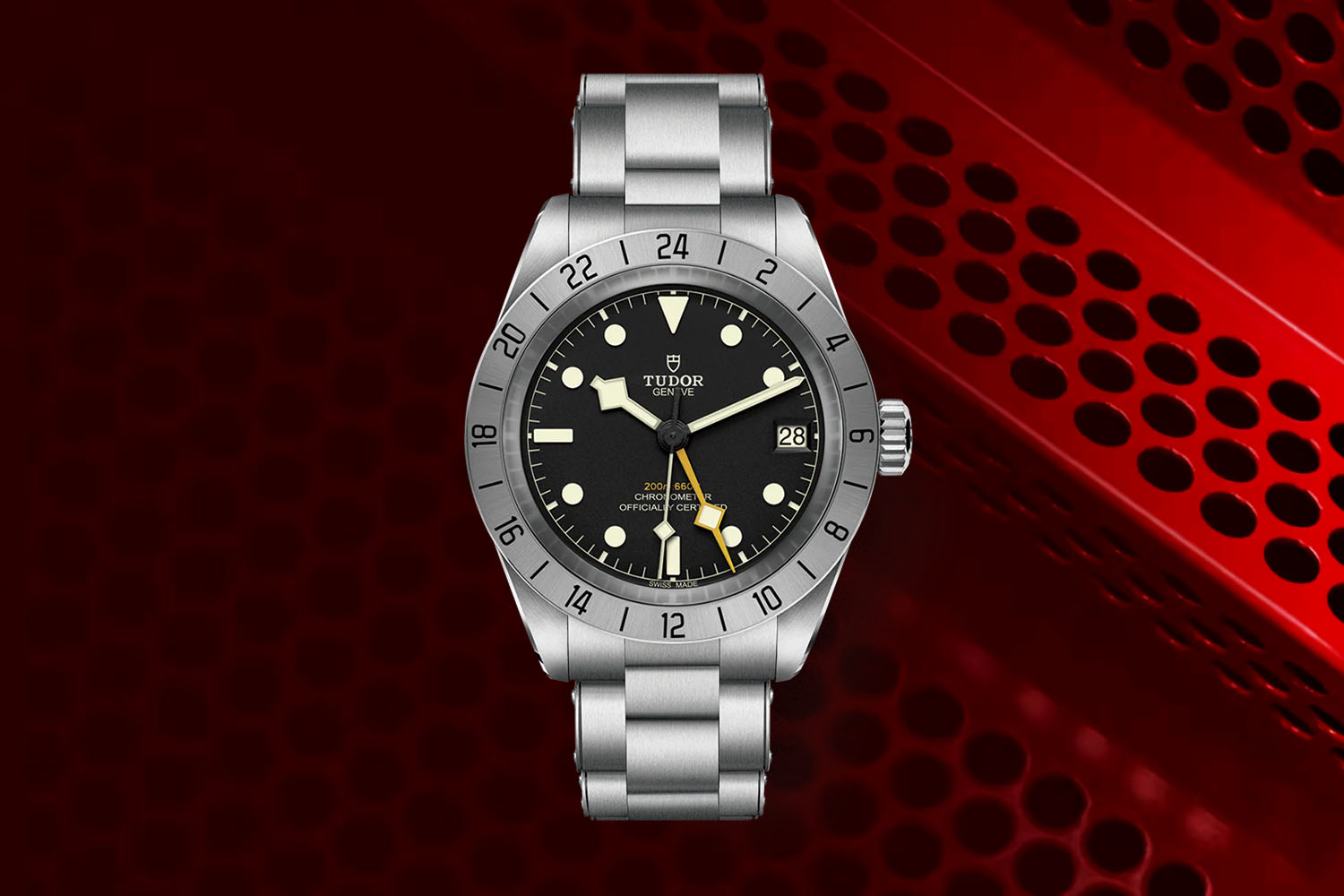
The Path Forward
Many watch manufactures look similar — components are manufactured or brought in from outside suppliers; movements are assembled; watches themselves are assembled; watches are tested. Rinse, repeat.
What’s special about Tudor’s operation — its brand newness aside — is the clever integration of technology, and the philosophies that help the company retain its competitive price point. (Plus robots. Robots are always dope.) With its mix of horizontal and vertical integration, its refusal to stock excess product, and its network of partners, Tudor is able to offer not only some of the best values in the watch business, but also some of the best made watches.
Since its return to the U.S. market in 2013, Tudor’s image and reputation has only grown. If its new manufacture is anything to go by, the future looks bright for Rolex’s sister company, and we can look forward to many more exciting new developments — and new timepieces — coming down the pike.
This article was featured in the InsideHook newsletter. Sign up now.
